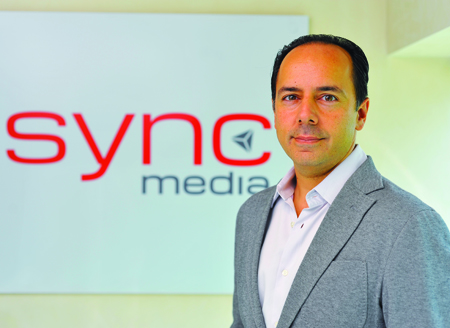The pure-play premium OTT market in the Middle East recently saw another entrant in the form of Starz Play Arabia joining the likes of Icflix, OSN Go and a bevy of telco offerings. Meanwhile, rumours abound of the impending arrival of Netflix and the launch of new broadcaster-backed offerings. This is all good news, as […]

The pure-play premium OTT market in the Middle East recently saw another entrant in the form of Starz Play Arabia joining the likes of Icflix, OSN Go and a bevy of telco offerings. Meanwhile, rumours abound of the impending arrival of Netflix and the launch of new broadcaster-backed offerings. This is all good news, as competition undoubtedly benefits consumers and drives innovation.
However, even at this early stage, it is becoming harder for services to differentiate themselves. Features such as HD streaming and multi-device support may have been enticing in the past, but they are now expected to be standard. Thus, the competing services have three primary competitive levers: price, content and convenience.
It is a safe assumption that a price war in a business that relies on volume rather than margin is a race to the bottom and best avoided unless one has deep pockets and a propensity to ignore commercial common sense. Inevitably, pure-play OTT services will converge around a similar price point or be free as part of triple or quad play offerings.
Content, is of course, the weapon of choice in this fight. And here again, it is easy to default to the lowest common denominator: Hollywood. Yes, Hollywood content can serve well as a glamorous window display with big brand-name actors and titles, but its ability to sustain high growth in subscriber numbers in the Middle East is, in my opinion, doubtful for a variety of reasons.
One reason is the lack of scarcity. There is no shortage of Hollywood content on free-to-air channels. Beyond blockbuster movies, viewership levels are not as impressive as they used to be. US drama series and sitcoms, in particular, do not appeal to a wide segment of the population in the Middle East markets that matter commercially.
Another reason is the windowing structure imposed by the studios, which results in a very delayed arrival of titles onto the OTT platforms. This model is out of step with market realities, but changing it is not always easy, due to the need to protect the US market or other international distribution commitments. Thus, ardent fans of a particular title will watch it in the pay-window or download it illegally shortly after its US broadcast. For everyone else, the content is free on FTA channels.
Television ratings indicate drama is the most popular genre, and time and time again, consumer surveys show that Arabic is, by far, the preferred language for drama series to be watched in. Although dubbing might work for a Turkish series because the locations and actors dont seem too distant, dubbing becomes much less convincing when the characters and settings are obviously foreign.
We come to the unsurprising conclusion that Arabic drama content is key to success. Even more alluring would be an OTT players ability to offer original content outside the Ramadan window. But simply taking a page from the book of Netflix and producing original content in sufficient volume to convince people to part with their money is not viable for all players. It takes significant production and marketing budgets to produce and promote content that appeals to the various markets within the Middle East.
Relying purely on library content is not a convincing offering for Middle East consumers. Licensing a first (Ramadan) or second (post-Ramadan) run of an Arabic drama series would allow OTT players to play their other trump card: binge viewing convenience.
An OTT player offering all 30 episodes of a drama on day one of Ramadan would create a new viewing experience for viewers. Similarly, offering exclusive Arabic dramas for binge viewing immediately after Ramadan would free viewers from the shackles of TV schedules. Since it is customary for licensors of first and second windows of Arabic drama to be granted a multi-year third run (library) window, an OTT player would still be able to maintain a broad long-tail offering.
The OTT player that can offer a large selection of exclusive first- and second-run Arabic series on multiple platforms, available from the first day of Ramadan or the post-Ramadan window for binge viewing, would certainly have a tempting proposition for subscribers in the Middle East.
Karim Sarkis is CEO at Sync Media FZ LLC.
















































































